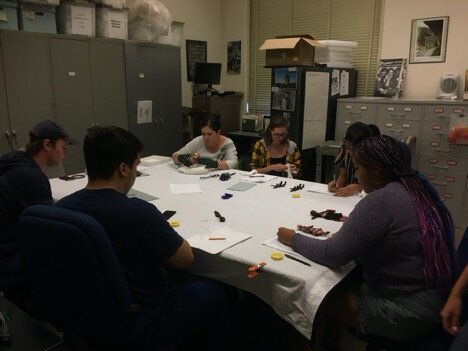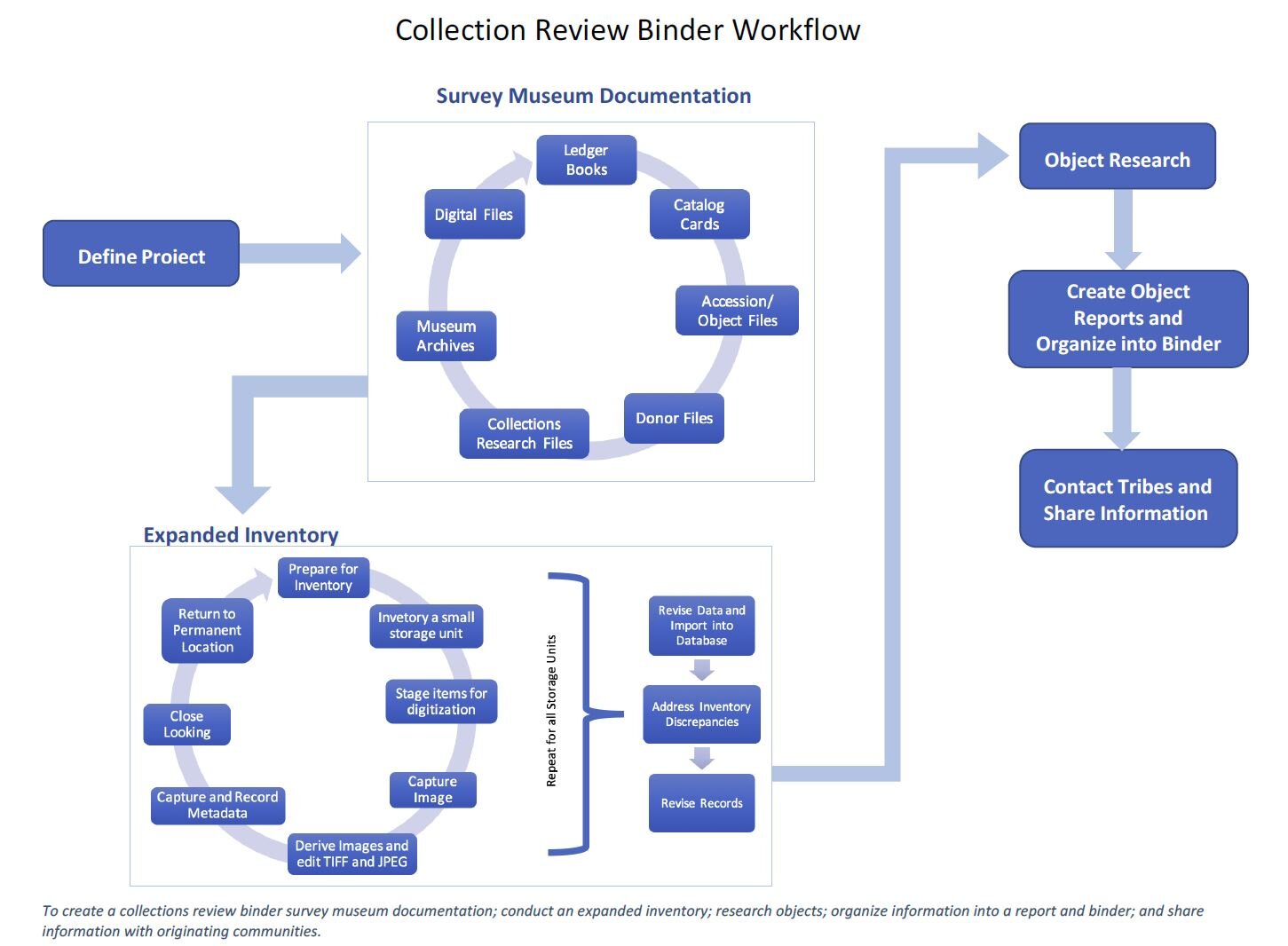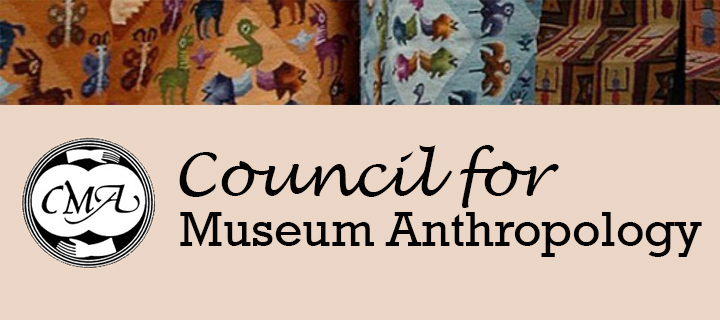Article begins
Introducing the Inaugural Conference of the Council for Museum Anthropology.
The following is co-authored by three emerging museum anthropology professionals tasked with using ethnographic methods to critically reflect on the inaugural Council for Museum Anthropology conference, which took place May 25–27 of this year at Concordia University, Montreal, QC. This is the first installment in the three-part series.
The inaugural meeting of the Council for Museum Anthropology (CMA) happened May 25–27 at Concordia University in Montreal, QC. The conference, titled “Museum Anthropology Futures,” brought together roughly 100 scholars and professionals, established and emerging, for three days of presentations, conversation, and community building. The conference coalesced at the CMA section meeting during the AAAs several years ago. Organizers Joshua Bell (Curator of Globalization, National Museum of Natural History, Smithsonian Institution), Erica Lehrer (Associate Professor, Departments of History and Sociology and Anthropology), Jennifer Shannon (Curator and Associate Professor of Cultural Anthropology, University of Colorado – Boulder), and John Lukavic (Associate Curator of Native Arts, Denver Art Museum), noted that growing enthusiasm among CMA members for a community-specific space outside of the annual AAA section meeting had finally grown to a point that such a conference was feasible.
What is “Conference Ethnography”?
The concept of conference ethnography stemmed from Jennifer Shannon’s dissertation research, in which conferences were one of her field sites. She and fellow organizer, Joshua Bell, approached us early this year to conduct a “conference ethnography” of the inaugural CMA Conference. The resulting project endeavored to document the development of ideas, community building, and the overall success of the conference, then reflect upon emergent themes through written reports. To accomplish these goals, we employed the ethnographic methods of participant observation, interview, and survey.
Ultimately, our understanding of the conference is rooted in three phases of interaction: involvement in the conference planning process, attendance of the conference proper, and post-conference communications. Due to the organizers’ interest in weaving the ethnography process into the fabric of the conference itself, we were in regular communication with the organizers and student organizing committee in the months leading up to the event regarding the goals of the project, logistical considerations, and the content and design of the conference program.
Pre-conference communication allowed us to explore goals and hopes for the outcome of the conference, as well as the ideologies which informed its content. We ensured that at least one ethnographer was present at each session and social event. This was possible thanks to two volunteer assistants, Molly Kamph and Sadie Colebank, who graciously offered their time and skills. We used official CMA social media accounts to share observations and photos throughout the conference to digitally interact with attendees. Additionally, we accepted every invitation to unofficial social gatherings.
Post-conference, we designed a survey in collaboration with conference organizers which was distributed to all attendees, presenters, staff, and organizers. At this time, we received 24 survey responses out of 103 recipients. Our dataset at this time includes photographs, videos, interview audio recordings, written notes, official conference materials, survey responses, and social media activity.
We would like to acknowledge several ways in which this project has been fundamentally unique. The most notable is the very brief existence of the “field site” environment—three days of conference activities at Concordia. This project necessarily straddled a line between promotion of the conference itself and critical engagement with its structure, function, and content. Accordingly, one of our intentions was to utilize this project to get a measure of “the state of the field.” We note that the individuals gathered, while influential in the field, do not wholly represent contemporary ideas and practices or the demographics of the field. In fact, who was and was not represented speaks volumes about the “state of the field,” something we will address directly in the following installments.
It must also be noted that this project was commissioned by the organizers of the conference. All three ethnographers were paid for their labor. We have established strong methodological standards and ethical boundaries to help us navigate this dynamic. These include limiting data access to only ourselves, and doing the work of analysis and writing on our own, non-paid time. While we respect our obligation to the organizers, we also feel a very strong obligation to the attendees of the conference who shared personal opinions and reflections about their experiences at the conference and in the field at large.
We recognize that our own demographic(s) impact our analysis of the conference proceedings and the conversations we were a part of. As three young, white, female emerging museum anthropologists, we came into the environment of the conference with pre-existing (and passionate) opinions on the field. We have attempted to listen carefully to the perspectives of all attendees, but cannot deny the effect of our identities upon our interpretation(s). Our findings strongly represent the voices of the young, female, students and emerging professionals in attendance, but we have attempted to mitigate that inequity through continually soliciting feedback via a variety of media.
What did ‘Museum Anthropology Futures’ look like?:
Through non-traditional presentation sessions (i.e., roundtables, workshops, pecha-kucha style presentations, and themed lunch tables), attendees took part in discussions of such topics as: decolonizing museologies, collaborative practices and politics, student perspectives on the field, teaching and mentorship, the role of technology in the future of museum anthropology, teaching with museum collections, and the role of activism in the museum.
Currently, museum anthropology in the United States is largely dominated by a focus on North American indigenous communities. While this conference certainly focused on these topics, it also included voices from anthropologists who study non-American Diasporic communities and Holocaust museums, among others. A standout session was the keynote, given by Wayne Modest (Head of the Research Center for Material Culture, Tropenmuseum, Museum Volkenkunde and Africa Museums), in which he discussed the role of activism in the museum, today’s “anxious politics,” and the wounds of anthropological and museological history.
Many participants of the conference expressed hope to foster a stronger museum anthropology community, in which diverse practitioners and academics can connect. These connections were fostered by the innovative structure of the conference, in which there was roughly equal time for socializing and community-building as there was for sessions. Importantly, 92 percent of respondents to a post-conference survey stated that their attendance at Museum Anthropology Futures connected them to the broader community of museum anthropology. Overall, our findings showed that the conference was very well received, and most participants cited feeling invigorated, connected, and inspired afterwards, though some did not, citing a divide between emerging academics and established professionals.
The second installment of this series will constitute a more thorough critical discussion of the data collected and our overall impressions. The third and final essay will expand on our findings and propose ways in which museum anthropology can move forward within anthropology, institutions, academia, and beyond. We will be discussing individual presentations and presenters throughout. For a reflection on each day’s events, written by us, see the Council for Museum Anthropology blog.
Find the full conference schedule here.
Haley Bryant (MA, GWU 2015) currently works as a digitization technician and as a research assistant for the Smithsonian Institution’s Department of Anthropology. Her academic interests include: community archiving projects, indigenous systems of knowledge organization and production, activism and advocacy, and experimental ethnography—particularly film. [email protected]
Emily Cain (MA, GWU 2015) manages cultural projects, engages with anthropological collections, and promotes public access to objects and information for the Department of Anthropology at NMNH as a curatorial assistant and digitization specialist. When not at the museum, she draws on her passion for community collaboration and experimental ethnography to reconnect with and contribute to her West Virginian heritage. [email protected]
Lillia McEnaney (BA, Hamilton College 2017) focuses her research on the American Southwest, visual and material culture, the anthropology of indigenous religion(s), and community-based collections and exhibitions. Lillia has been the CMA Blog Intern since 2014 and will be attending New York University in Fall 2017. [email protected]
Cite as: Bryant, Haley, Emily Cain, and Lillia McEnaney. 2017. “Ethnography of Museum Anthropology Futures.” Anthropology News website, August 11, 2017. doi: 10.1111/AN.523




